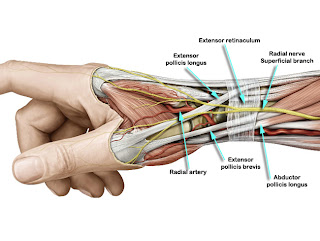Hypoalgesic Mechanism in Mulligan techniques: A comparison of peripheral & spinal manual therapy produced mechanisms
Mulligan's mobilization with movement treatment technique for the elbow (MWM), a peripheral joint mobilization technique, produces a substantial and immediate pain relief in chronic lateral epicondylalgia. Abbott JH & colleagues reported MWM is a promising intervention modality for the treatment of patients with Lateral Epicondylalgia. They found immediate impact on grip strength in making it pain-free (48% increase in pain-free grip strength). Both pain-free grip strength and maximum grip strength of the affected limb increased significantly following the intervention. Pain-free grip strength increased by a greater magnitude than maximum grip strength.
Non-opioid pain modulation of spinal manual therapy: Naloxone antagonism and tolerance studies, which employ widely accepted tests for the identification of endogenous opioid-mediated pain control mechanisms, have shown that spinal manual therapy-induced hypoalgesia does not involve an opioid mechanism.
However immediate hypoalgesia has been reported by Mulligan’s MWMs have not been studied. Where as amplitude of hypoalgesic effect associated with MWMs is far greater than that previously reported with spinal manual therapy treatments. This prompted a debate that peripheral manual therapy treatments may differ in mechanism of action to spinal manual therapy techniques.
Paungmali & colleagues studied the effect of naloxone administration on the hypoalgesic effect of MWM. This study was a RCT administering naloxone, saline, or no-substance control injection on the MWM-induced hypoalgesia in 18 participants with lateral epicondylalgia. The outcome measures ware:
1. Pain-free grip strength
2. Pressure pain threshold
3. Thermal pain threshold and
4. Upper limb neural tissue provocation test 2b.
This study found that initial hypoalgesic effect of the MWM was not antagonized by naloxone. Which indicates that peripheral mobilization treatment technique appears to have a similar effect profile (nonopioid-mediated hypoalgesia) to previously studied spinal manual therapy techniques.
Reference:
1. Abbott et al; Man Ther. 2001 Aug;6(3):163-9.
2. Pangumali et al; J Manipulative Physiol Ther. 2004 Mar-Apr;27(3):180-5.


Comments
Post a Comment